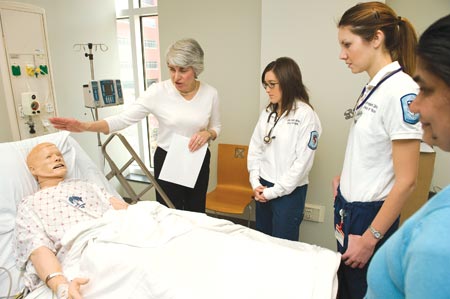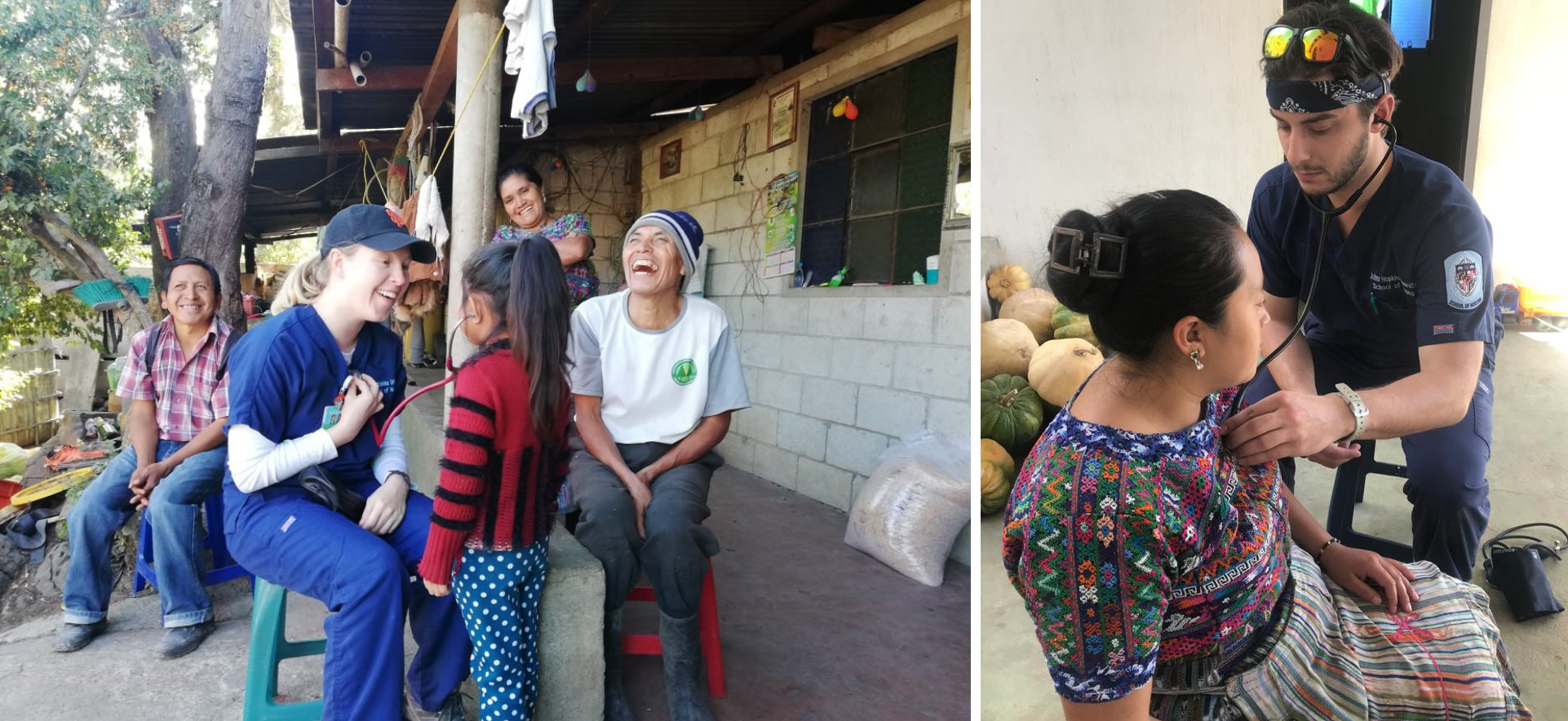By Teddi Fine
Nursing students are exposed to a broad array of clinical situations and settings as an integral part of their education. Since patient safety is a foremost consideration, students manage a limited number of patients and do so under close supervision. Hands-on educational opportunities ebb and flow with the patient census. Participation in challenging, high-risk clinical work often is a matter of timing and circumstance. As a result, the students’ clinical experiences can vary widely. Often, their first exposure to a particularly complex case may occur after graduation in clinical practice, when their patient loads can triple or quadruple and supervision may be minimal. But have they been well prepared to meet new situations head on with solid decision-making acumen and an eye toward patient safety?
 It’s an issue of considerable concern to Pamela R. Jeffries, DNS, RN, FAAN, ANEF, associate dean of academic affairs at the Johns Hopkins University School of Nursing. She has been searching for ways to better assure that new nurses are well-prepared to juggle multiple competing demands requiring attention to detail and to assess their ability to transfer clinical competencies from the classroom to the clinical setting. Her solution: the increased use of simulation experiences to model the high-risk clinical environment. From manikins and role-play to interactive media and standardized patients, simulations can help students learn, test clinical skills, and, perhaps even more importantly, develop decision-making skills for difficult-to-manage situations.
It’s an issue of considerable concern to Pamela R. Jeffries, DNS, RN, FAAN, ANEF, associate dean of academic affairs at the Johns Hopkins University School of Nursing. She has been searching for ways to better assure that new nurses are well-prepared to juggle multiple competing demands requiring attention to detail and to assess their ability to transfer clinical competencies from the classroom to the clinical setting. Her solution: the increased use of simulation experiences to model the high-risk clinical environment. From manikins and role-play to interactive media and standardized patients, simulations can help students learn, test clinical skills, and, perhaps even more importantly, develop decision-making skills for difficult-to-manage situations.
“The value of simulations cannot be overstated,” Jeffries observes. “Simulations help students safely hone skills and problem-solving that, down the road, can help them save lives in virtually every service setting and patient population.”
Most recently, Jeffries has been assessing the use of simulations to provide a non-threatening environment in which students’ nursing skills can be learned and tested. Writing in “Fostering patient safety competencies using multiple-patient simulation experiences” [Nursing Outlook November/December 2009], Jeffries describes the results of a study testing a simulation that helps assess nursing students’ ability to manage complex, even ambiguous, patient safety-related decisions while juggling a large patient load.
She found that this type of simulation helps students master patient safety skills and, ultimately, better safeguard their patients’ health and lives. Jeffries says, “Simulations allow us to expose students to high-risk nursing situations they may not see in their clinical rotations, making it possible to bridge gaps and provide an opportunity to prepare our students for real-world clinical situations.”
 Global Service Learning: Guatemala
Global Service Learning: Guatemala Guatemala Re-visited: Rainwater Project Shows Value of Service-learning Trips
Guatemala Re-visited: Rainwater Project Shows Value of Service-learning Trips You’re Welcome
You’re Welcome My First Teachers in Nursing School Weren’t Nurses
My First Teachers in Nursing School Weren’t Nurses Awards for Diversity
Awards for Diversity






